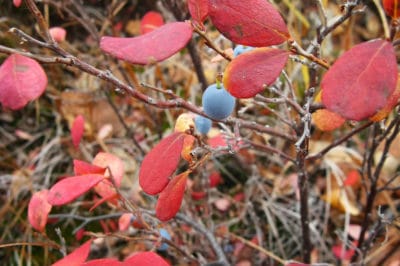Phosphorous Deficiency
Maroon colored blueberry leaves in the spring are an indication of phosphorous deficiency. Blueberries require acidic soil with a pH of 4.5 to 5.0. If the pH of your soil is over 5.2, then the blueberry bushes can’t uptake enough phosphorous. Increasing the acidity of your soil can help alleviate the symptoms of phosphorous deficiency. The following organic matter increases soil acidity:
- Pine bark mulch
- Coffee grounds
- Composted manure
- Alfalfa meal
- Dried leaves
- Peat moss
Interveinal Red Leaves
When the veins of your blueberry leaves turn red, it can be an indication of magnesium deficiency or viral disease. When your blueberry bushes don’t take in enough magnesium, it reduces chlorophyll production. The veins of the leaves will start turning yellow and then eventually become bright red. It affects young leaves first. Magnesium deficiency can lead to plant disease. Sprinkling Epsom salt around your blueberries increases the magnesium in the soil.
Two viral diseases also cause red veins in blueberry leaves. These diseases are known as:
- Blueberry scorch
- Sheep Pen Hill disease
They infect blueberries in the spring and cause blossom blight. If your blueberries contract one of these diseases, there’s no cure. Aphids spread the disease as they hop from plant to plant. It only takes a few minutes to infect all your blueberries. Pull up the blueberry bushes and burn them, so the disease doesn’t spread to your other blueberries. An aphid control program will help prevent these blueberry diseases.
Red Spots
The Red Ringspot virus causes red spots of the tops of blueberry leaves. The red spots are most visible in the summer when the leaves turn pale green and the spots appear. Spots can also form on the berries. This disease spreads quickly, so it’s best to remove all the infected plants before the virus spreads.
